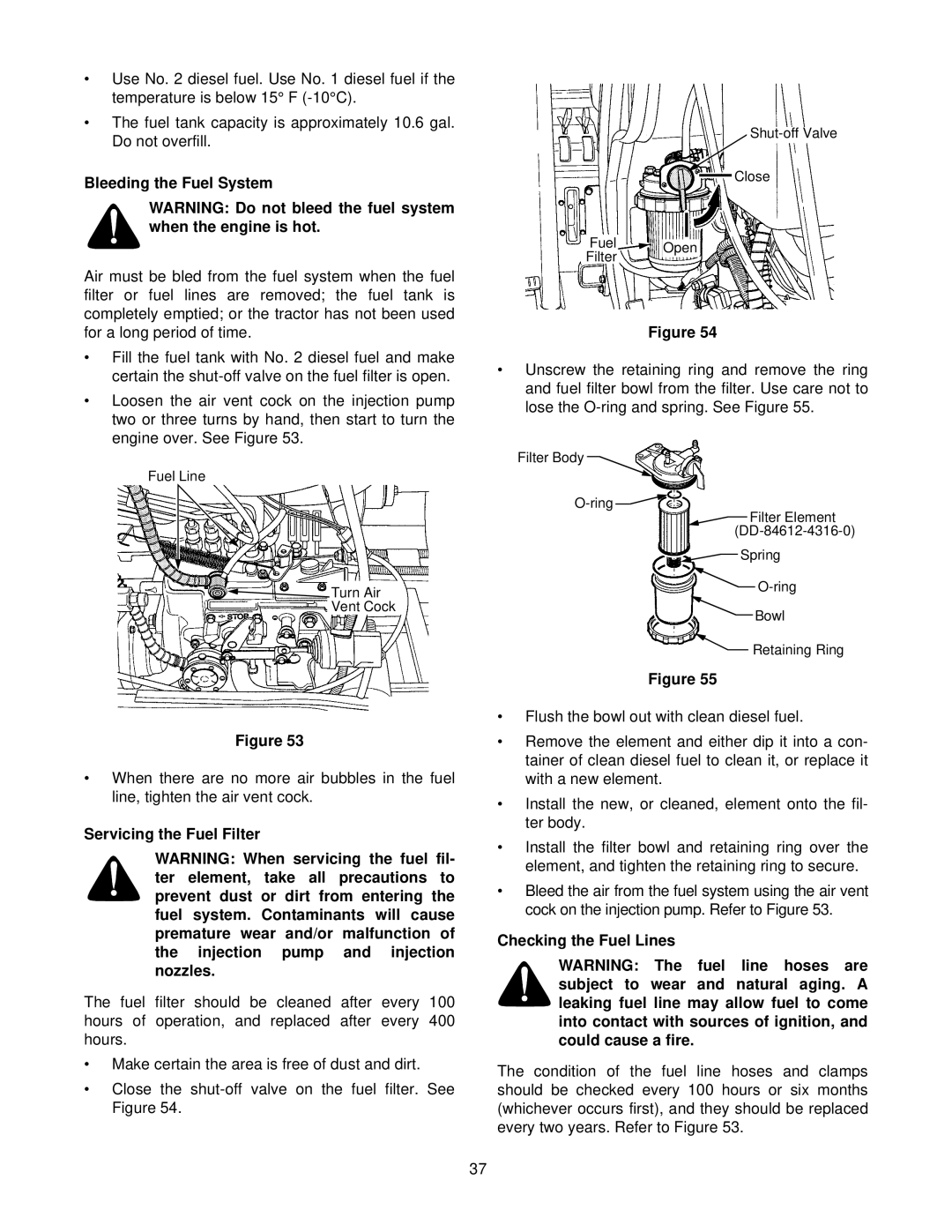
•Use No. 2 diesel fuel. Use No. 1 diesel fuel if the temperature is below 15° F
•The fuel tank capacity is approximately 10.6 gal. Do not overfill.
Bleeding the Fuel System
WARNING: Do not bleed the fuel system when the engine is hot.
Air must be bled from the fuel system when the fuel filter or fuel lines are removed; the fuel tank is completely emptied; or the tractor has not been used for a long period of time.
•Fill the fuel tank with No. 2 diesel fuel and make certain the
•Loosen the air vent cock on the injection pump two or three turns by hand, then start to turn the engine over. See Figure 53.
Fuel Line
![]() Turn Air
Turn Air
Vent Cock
Figure 53
•When there are no more air bubbles in the fuel line, tighten the air vent cock.
Servicing the Fuel Filter
WARNING: When servicing the fuel fil- ter element, take all precautions to prevent dust or dirt from entering the fuel system. Contaminants will cause premature wear and/or malfunction of the injection pump and injection nozzles.
The fuel filter should be cleaned after every 100 hours of operation, and replaced after every 400 hours.
•Make certain the area is free of dust and dirt.
•Close the
Close
Fuel ![]() Open
Open
Filter
Figure 54
•Unscrew the retaining ring and remove the ring and fuel filter bowl from the filter. Use care not to lose the
Filter Body ![]()
![]()
![]()
![]() Filter Element
Filter Element
![]()
![]() Spring
Spring
![]()
![]() Bowl
Bowl
Retaining Ring
Figure 55
•Flush the bowl out with clean diesel fuel.
•Remove the element and either dip it into a con- tainer of clean diesel fuel to clean it, or replace it with a new element.
•Install the new, or cleaned, element onto the fil- ter body.
•Install the filter bowl and retaining ring over the element, and tighten the retaining ring to secure.
•Bleed the air from the fuel system using the air vent cock on the injection pump. Refer to Figure 53.
Checking the Fuel Lines
WARNING: The fuel line hoses are subject to wear and natural aging. A leaking fuel line may allow fuel to come into contact with sources of ignition, and could cause a fire.
The condition of the fuel line hoses and clamps should be checked every 100 hours or six months (whichever occurs first), and they should be replaced every two years. Refer to Figure 53.
37
